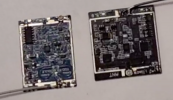uavbooster
Member
Ok, let me respond. If you are still reasonable. The amplifier is very heavy, and the amplifier consumes a lot of power, which should be greater than 20W. I remember that. Is this suitable for drones? NDL weighs about 10g and consumes 6W of electricity. Of course you can use an external battery for RC, but can it be installed on a drone? NDL can be installed on the drone.Who are you and what are you talking about? LOL This has been used for many years and works perfectly on the Yuneec controller.
Last edited:












